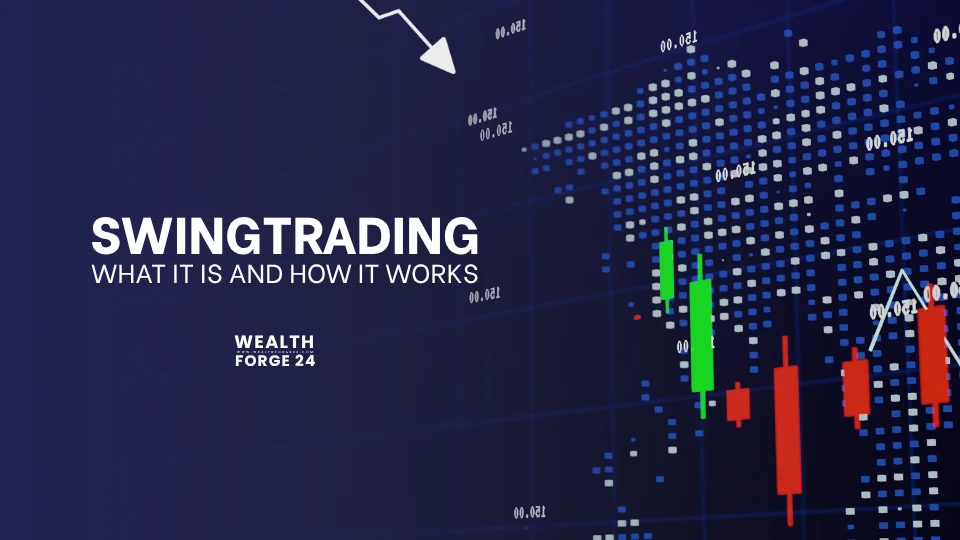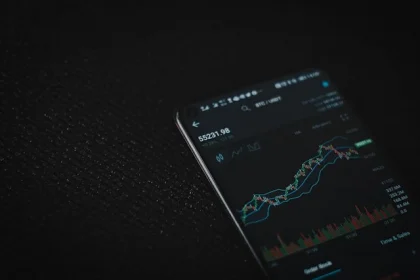What is swing trading?
Swing buying and selling is a famous buying and selling method designed to take advantage of price actions, or ‘swings,’ inside the markets. Swing buyers look to shop for or sell an asset before its cost makes its next enormous circulation, before their role for an earning.
Within this manual, we’ll cover the types of techniques a swing trader makes use of. Also, we’ll examine the technical signs swing investors use. These signs help them decide if it’s smart to go long or short on an asset.
The basic premise of swing buying and selling is.
A swing trader seeks to seize a percentage of a bigger market move. They exchange on the belief that the charge of belongings doesn’t grow linearly. Instead, prices go through many peaks and troughs at some points in a trading session.
The process of a swing dealer is to decide whether or not an asset’s price is likely to rise or fall next before taking a role in the marketplace. Their profitability depends on predicting market movements accurately and regularly. For example, they aim for a high win-to-loss ratio.
Swing buying and selling is different from other medium-to-long-term strategies. It doesn’t always aim for big market movements. Swing traders look for short opportunities to profit from price movements. Unlike other methods, they don’t hold assets for years. They aim for minimal risk and maximum reward.
How does swing buying and selling range from day buying and selling?
There is a pleasant line between swing buying and selling and day buying and selling. Day traders open and close their positions within the same trading session. They aim to make small but steady profits from quick market movements.
Swing investors aim to hold positions overnight or for several days or weeks. This strategy helps them capture the full price movement in the market.
Another big difference between the 2 is the types of margin offered to day traders and swing investors. Day traders can trade with a margin of 4:1. Swing traders usually get a lower margin, like 2:1. This helps them manage the risks of holding positions overnight.
Most common strategies for swing trading.
Familiarizing yourself with swing buying and selling techniques is a great idea if you’re new to swing trading. These techniques provide a solid framework for entering and exiting the markets.
Breakout buying and selling.
- Breakout buying and selling strategies focus on an asset’s trading range. This range is the distance between its support and resistance points. Traders look for signs that this range is breaking or about to break. Swing traders use several technical indicators to determine the power or weak spot of an asset’s price in the marketplace.
- The most famous is a volume-weighted moving average indicator. This video display unit is the burden of money buying or selling an asset. If an asset nears its resistance point, a swing trader might back it. They believe momentum will keep going, and new highs will follow.
- If an asset is about to break its guide point, a swing trader will likely short-sell it. They believe the momentum will continue, and new lows will follow.
Trend trading
- Trend-based swing buyers use technical indicators to track an asset’s short-term price movements. Swing buyers aim to capture a piece of the overall trend. They focus on riding the wave instead of predicting when it will start or stop.
- Moving averages and the relative strength index can help swing buyers. They show whether a bullish trend may keep going up or if a bearish trend might go down.
Using technical indicators for swing trading.
A swing dealer often relies on technical analysis. This helps them gain confidence in their trading role. Technical analysis looks at old price patterns and current price movements. This helps find good points to enter and exit trades.
Let’s observe three of the most typically used technical signs for opening a swing alternate:
Relative power index (RSI)
When a swing trader spots a trend in the market, the RSI indicator helps measure the trend’s momentum strength. The RSI can show if an asset is ‘overbought.’ This means it’s overpriced and likely needs a market correction. Similarly, the RSI can also monitor if an asset is ‘oversold,’ which means that it is undervalued and due for a market correction.
The RSI ‘rating’ is on a scale of 0 to one hundred. Any asset registering 70 or better at the RSI oscillator is deemed overbought, even as something under 30 is deemed oversold.
Moving averages (MA)
An MA indicator assesses the last rate statistics for an asset over a set time frame. This helps to visualize its common fee for that length. It can be 30 days, 50 days, or 12 months. The indicator plots the average ultimate values for each day on a line graph to chart the movements of an asset. The MA indicator helps plan or confirm trends instead of predicting them. The MA chart shows past data, so it lags behind the current market price.
A typical swing trading approach related to MA signs sees investors hunt for ‘crossovers’ between two MAs. This includes a fast-moving MA, like a 50-day MA, and a slower-moving one hundred-day MA. The key is to plan the factors wherein the moving averages crossover, which is a key signal for a trade in an asset’s rate course. If a 50-day MA crosses the 100-day MA and moves upwards, it may signal the start of a bullish trend. Similarly, if it moves downwards, under the 100-day MA, it may signal the start of a bearish trend.
Stochastic oscillator
A stochastic oscillator is another type of momentum indicator, like RSI. A stochastic oscillator looks at the last 14 days of trading. It compares the current price of an asset to its price range during this period. It shows momentum shifts often seen before market volume peaks. This makes it a key indicator for swing investors.
There are two lines at the stochastic oscillator: the black indicator and the purple dotted signal. The scale for the stochastic oscillator is zero to one hundred, much like the RSI. If the traces rise above eighty, the asset is overbought. If they drop below twenty, it suggests an oversold market.
The pros and cons of swing trading.
If you are still uncertain whether swing trading is the right trading strategy for you, consider the following pros and cons to help you decide:
Pros of swing buying and selling
- Ideal for those with time constraints.
- If you work full-time and can’t spend all day on trading software, swing buying and selling might be a good option for you. Swing trades can close as low as 15 half-hours in the market or last as long as some days or perhaps weeks. The time frame of a swing exchange in the long run relies on how long you expect the trend to head in your direction.
- Allow for marketplace movements to appear at a slower tempo.
- Swing investors aim for one strong market move to capture their daily gains. Swing investors aim for larger price changes, while day traders seek quick, small profits daily. They will be less worried about time in the market and more focused on exiting when the momentum of their alternatives fizzles out.
- Utilize technical indicators to capture trends.
- Many swing buyers use technical signs to set their entry and exit points. They ignore external ‘noise.’ The three signs we discussed earlier help spot breakouts in buying and selling. They also show the chances of an asset reaching higher highs or lower lows.
Cons of swing buying and selling
- It takes time to grasp technical evaluation.
- • Swing trading requires you to examine and interpret real-time charts. Mastering technical analysis isn’t an overnight procedure. As a retail dealer, finding entry and exit points for a swing trade can be tough. Professional investors with years of market experience do this more easily.
- Swing traders are always vulnerable to “gapping.”
- Some swing buyers will take long-term positions over several days or weeks. This could lead to gapping. When the market reopens the next day, it may be far from the previous day’s closing price. This happens when an asset’s fundamentals alter all of a sudden, while the marketplace is closed.
- Leverage can magnify losing positions.
- • Most swing buyers will prefer to change with leverage to maximize their open role within the markets. Swing buyers hold positions longer than day traders. This can lead to bigger losses, especially if they don’t use low-risk strategies like stop-loss orders.
Swing trading is a good option for those who can’t spend all day buying and selling. It allows you to trade without being glued to the markets from open to close. Shift buyers’ focus to technical analysis rather than fundamental analysis for their trading decisions. They use technical indicators to find entry and exit points. They often focus on support and resistance areas. This approach to swing buying and selling can be done in almost any monetary marketplace.








